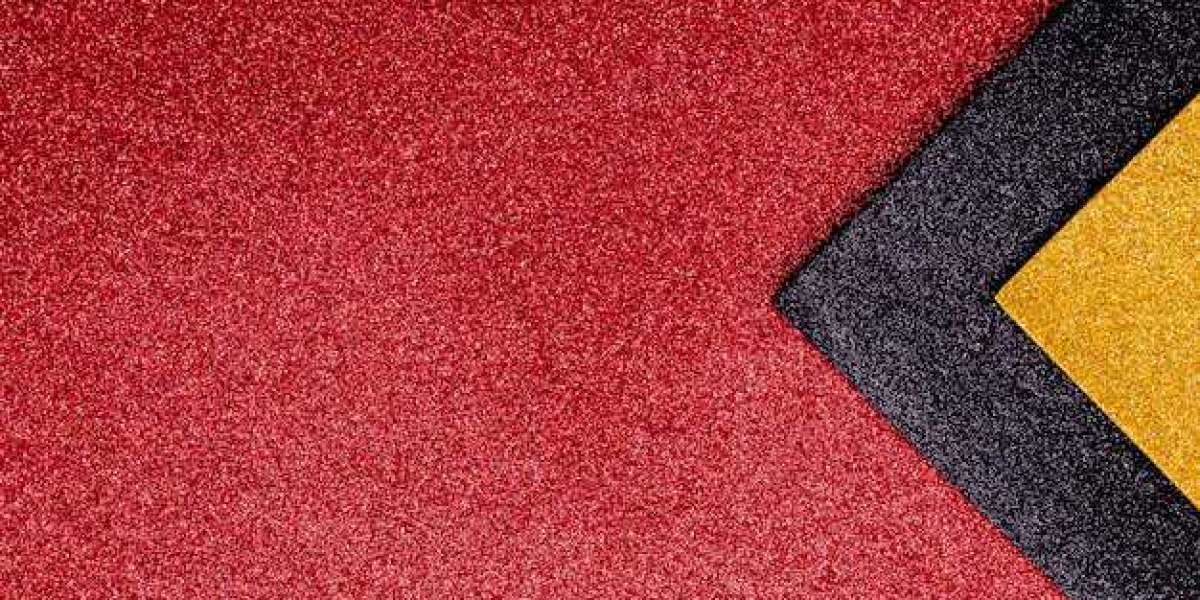When it comes to flooring, a quality carpet can transform your space, offering both aesthetic appeal and functional benefits. Whether you’re renovating a room or outfitting a new home, understanding what defines a high-quality carpet is essential for making a wise investment. In this guide, we will explore what makes a carpet "quality," key features to look for, the different materials, and how to maintain your carpet to keep it looking beautiful for years.
1. What Defines a Quality Carpet?
A quality carpet is not just about appearance—its construction, materials, durability, and performance also play crucial roles. A good carpet should feel comfortable underfoot, last for many years, and withstand the daily wear and tear of your home. Quality carpets combine aesthetic appeal with practical functionality, providing comfort, sound insulation, and easy maintenance.
Here are some of the defining characteristics of a quality carpet:
- Durability: A high-quality carpet will be able to handle foot traffic and maintain its appearance over time.
- Comfort: A soft, plush texture that feels comfortable underfoot is a hallmark of quality.
- Stain Resistance: The ability to resist stains and be cleaned easily is a key feature of good-quality carpet.
- Appearance Retention: Quality carpets retain their color and texture without showing signs of wear or fading prematurely.
2. Materials that Make a Quality Carpet
The material used to make a carpet is one of the most significant factors that determines its quality. There are various types of fibers, each with its own advantages and ideal applications. Here are some of the best materials for a quality carpet:
a) Wool
Wool is a natural fiber known for its luxurious feel, durability, and stain resistance. It’s soft underfoot, yet tough enough to withstand heavy use. Wool carpets also resist dirt and dust, which makes them an excellent choice for homes with allergies. However, wool carpets tend to be more expensive than synthetic options.
b) Nylon
Nylon is one of the most durable and versatile synthetic fibers, making it a popular choice for high-quality carpets. It is resistant to wear and tear, as well as stains, making it perfect for high-traffic areas like living rooms and hallways. Nylon carpets maintain their appearance for years and are easy to clean.
c) Polyester
Polyester is a soft and affordable synthetic fiber that is stain-resistant and available in a wide variety of colors. It’s not as durable as nylon, but it offers good performance in moderate traffic areas. Polyester carpets are a great budget-friendly option that still provides quality.
d) Triexta
Triexta is a newer fiber that combines the best qualities of both nylon and polyester. It’s soft, durable, and highly stain-resistant. Triexta carpets also retain their color and texture over time, making them an excellent option for those seeking quality without the high price tag of wool.
e) Olefin
Olefin (also called polypropylene) is another synthetic fiber that’s known for being resistant to moisture, mildew, and stains. While not as durable as nylon or wool, it is often used in lower-traffic areas or for outdoor carpeting. Olefin is a great value option for those looking for quality at a lower cost.
3. Carpet Construction: How It Affects Quality
In addition to the fiber material, the way a carpet is constructed is another key factor in determining its quality. Carpet construction refers to how the fibers are attached to the backing of the carpet and can significantly affect its durability, texture, and appearance.
a) Cut Pile
Cut pile carpets have individual yarns that are cut at the top, creating a soft, plush surface. High-quality cut pile carpets are dense and resilient, meaning they’ll maintain their texture and softness over time. Popular styles include Saxony, plush, frieze, and shag.
b) Loop Pile
Loop pile carpets have uncut loops of fiber, which makes them more durable and ideal for high-traffic areas. High-quality loop pile carpets are tightly constructed, preventing the loops from snagging and maintaining their shape even with heavy use. Berber is a popular type of loop pile carpet.
c) Cut and Loop Pile
Cut and loop pile carpets combine both cut and looped fibers to create textured patterns. This type of construction adds visual interest and can hide dirt and stains better than other types of pile. A well-constructed cut and loop pile carpet is durable and offers excellent performance.
4. The Importance of Carpet Density and Thickness
Two other important aspects to consider when choosing a quality carpet are its density and thickness. These features affect the carpet’s durability and comfort:
a) Density
Carpet density refers to how closely the fibers are packed together. A high-density carpet has fibers that are tightly woven, making it more durable and resistant to crushing or matting. The denser the carpet, the more resilient it will be to foot traffic, stains, and general wear.
b) Thickness
Carpet thickness refers to the height of the fibers and the depth of the carpet pile. While thicker carpets may seem more luxurious, they’re not always the most durable. In fact, a thinner but denser carpet often performs better in high-traffic areas because it resists wear and keeps its shape longer.
5. How to Identify a Quality Carpet
There are several ways to tell if a carpet is of good quality:
- Look for a high fiber density: High-quality carpets will have a high number of fibers per square inch. This can often be felt by running your hand across the surface of the carpet.
- Check for a strong backing: Quality carpets should have a sturdy backing that adds stability and prevents the carpet from sagging or shifting over time.
- Examine the texture: High-quality carpets have a consistent texture that feels comfortable underfoot. The fibers should not feel loose or brittle.
- Test for resilience: A quality carpet will bounce back after being compressed. Walk on the carpet or press down with your hand to test how well it recovers.
6. Carpet Styles and Patterns
The style and pattern of your carpet are important considerations as well. Quality carpets come in a variety of styles, such as:
- Solid colors: These carpets provide a clean, classic look that can match almost any décor.
- Textured patterns: Textured carpets can add visual interest and hide dirt and stains, making them ideal for high-traffic areas.
- Striped or patterned carpets: These carpets add a bold, dramatic effect to a room. High-quality patterned carpets will maintain their design and not become distorted over time.
7. Maintaining Your Quality Carpet
To ensure your quality carpet lasts for years, proper maintenance is essential. Here are a few tips:
- Vacuum regularly: Vacuum your carpet at least once a week to remove dirt and dust. In high-traffic areas, more frequent vacuuming is necessary.
- Spot clean spills: Clean up spills immediately to avoid stains. Use the appropriate cleaning solution for your carpet type.
- Deep clean periodically: Have your carpet professionally cleaned every 12 to 18 months to remove deep-seated dirt and allergens.
- Use a carpet pad: A high-quality carpet pad can help extend the life of your carpet by providing extra cushioning and reducing wear.
8. Conclusion
Choosing a quality carpet is an investment that can enhance the comfort, appearance, and functionality of your home. Whether you opt for luxurious wool, durable nylon, or budget-friendly polyester, make sure to consider factors like fiber material, construction type, and carpet density. By following the tips in this guide and maintaining your carpet properly, you can enjoy your new flooring for years to come.








